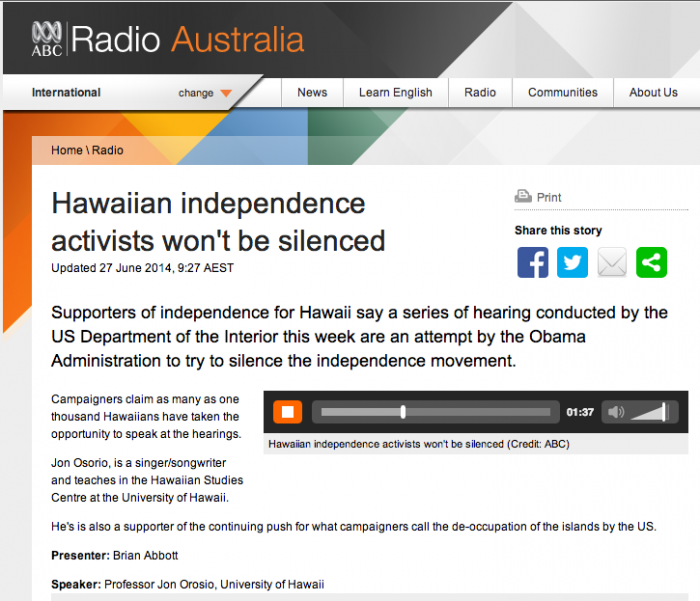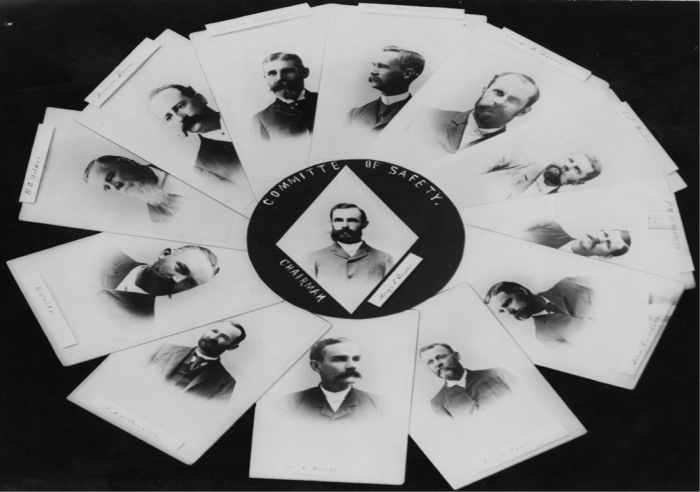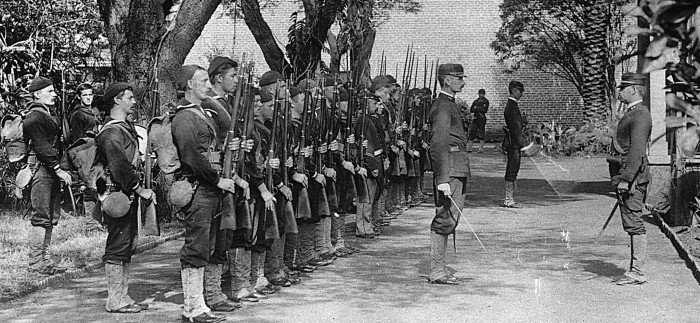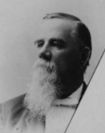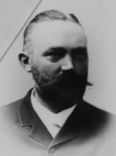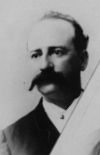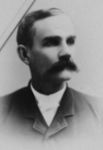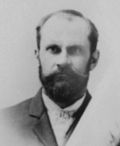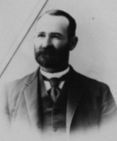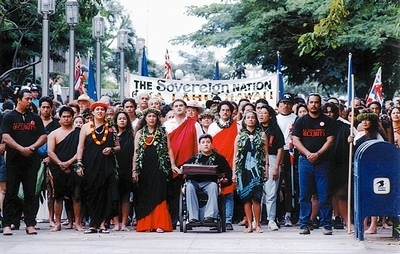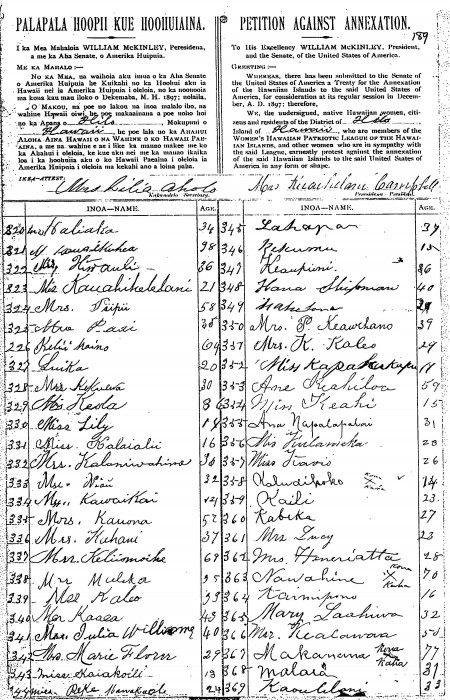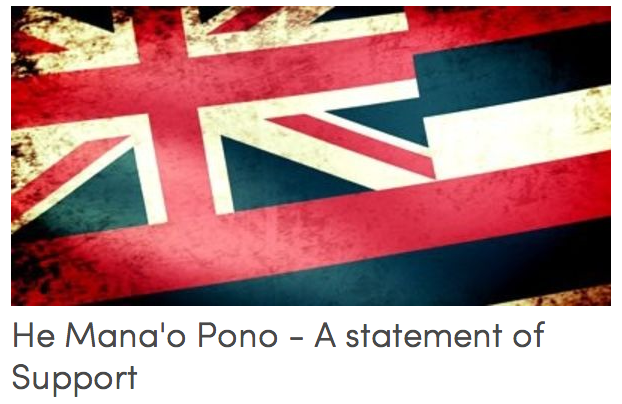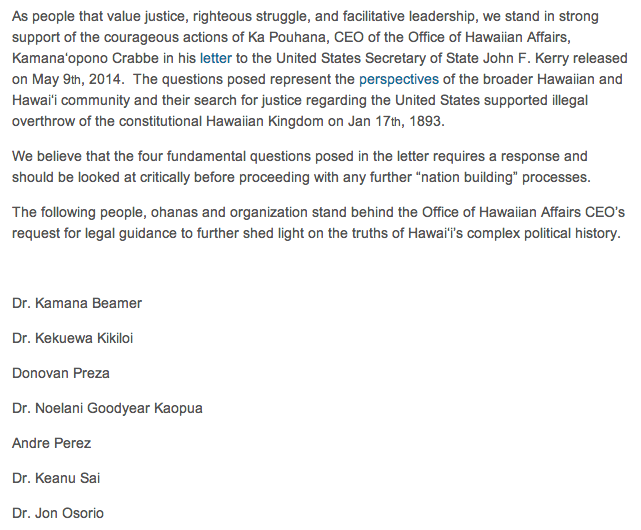To listen to the interview click here.
Category Archives: Education
Star Advertiser: Hawaiians reject federal input
The Star Advertiser reports “Interior Department meetings draw testimony opposed to recognition of a future native nation“
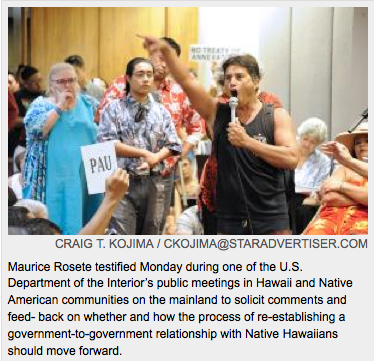 The vast majority of people who testified before a federal panel Monday soundly rejected any attempt by the Obama administration to pursue federal recognition of a future Native Hawaiian governing body.
The vast majority of people who testified before a federal panel Monday soundly rejected any attempt by the Obama administration to pursue federal recognition of a future Native Hawaiian governing body.
In often passionate, sometimes heated testimony, dozens of speakers said they opposed any effort by the Department of the Interior to start a rule-making process that could set the framework for re-establishing a government-to-government relationship with Native Hawaiians.
At the first two of 15 public meetings scheduled over the next two weeks, most of those testifying said the department does not have the authority to re-establish that relationship and implored the agency to halt the process and not interfere in Hawaiians’ right to political self-determination.
“We don’t need you folks to come in and tell us what to do,” Hawaiian activist Dennis “Bumpy” Kanahele told the panel Wednesday morning at the state Capitol auditorium.
He expanded on those remarks at an evening meeting in Waimanalo, where 154 people signed up to speak.
“You gotta realize that a crime has taken place,” Kanahele said. “And the United States essentially came back to the crime scene. We need to decide how to govern ourselves. We don’t need the federal government.”
At the evening session he was followed by Brandon Maka‘awa‘awa of Waimanalo.
“In the past the Native Hawaiian people have suffered the manipulation of our rights to self-determination on numerous occasions,” he said. “Once again our inherent sovereignty and rights to self-determination are being undermined by these DOI meetings. It is our political right to govern ourselves. The Native Hawaiian people have already begun the process and should be allowed to finish it without the interference of the U.S. government.”
Many of the speakers said they are not interested in seeing Hawaiians attain a tribal status similar to American Indians, which was what backers of the so-called Akaka Bill in Congress unsuccessfully attempted to do for more than a decade.
They said Hawaii is an illegally occupied sovereign nation and that any government-to-government dealings should be between a kingdom government and the U.S. secretary of state, who deals with foreign nations on behalf of the United States, not the interior secretary.
DeMont R.D. Conner of Nanakuli used the analogy of a car theft and the federal government’s 1993 apology for the 1893 overthrow of the Hawaiian monarchy to question the department’s current actions: The thief apologizes to the owner but keeps the car.
“Go back and tell your boss, ‘Give ’em back the car!'” Conner told the panel.
More than 140 people signed up to testify at the Monday morning session, which was attended by an overflow crowd of more than 200 people and lasted more than three hours.
“It’s very simple: You don’t have jurisdiction here,” said testifier Remi Abellira, adding, “We don’t need recognition. We know who we are.”
Over the next two months, the department is taking public comments at the Hawaii sessions and at additional meetings in Native American communities on the mainland. It also is soliciting written comments.
The feedback is meant to help the Obama administration determine whether it should propose a federal rule that would facilitate the process for re-establishing a government-to-government relationship.
It also is soliciting comments to determine what form that process should take — if the administration decides to pursue that path — and whether the federal government should assist the Native Hawaiian community in reorganizing its government.
“Be clear. This is only a first step,” Rhea Suh, the Interior Department’s assistant secretary for policy, management and budget, told those at the morning session.
Suh was one of six officials from that agency and the Justice Department to sit on the panel.
Sam Hirsch, a Justice Department attorney, told the crowd that the federal government does not have procedures in place to pursue administrative recognition of a Native Hawaiian government.
That’s why the meetings are needed should the Interior Department decide to pursue that path, Hirsch said.
But he emphasized that the sessions will not address what structure the yet-to-be-formed Hawaiian government should take.
“That’s a matter for the community” to decide, Hirsch said.
To the main questions asked by the panel, University of Hawaii law professor Williamson Chang offered these comments: “I want to say no, no, no. No to federal recognition, no to occupation, no to the United States.”
Walter Ritte of Molokai testified that the department’s timing couldn’t be worse, particularly as Hawaiians are engaged in a controversial nation-building effort.
“You’re bringing confusion,” he said.
Of the several dozen who testified at the morning session, only a few supported the department’s plan.
Office of Hawaiian Affairs Chairwoman Collette Machado was among those, and her time at the microphone eventually turned into a shouting match with members of the audience.
Davianna Pomaikai McGregor, a UH ethnic studies professor, also offered supporting testimony, saying the process should not interfere with the re-establishment of the kingdom government.
“We should be supporting both efforts,” McGregor told the Honolulu Star-Advertiser after she testified.
Other than occasional jeers from the audience and a few profanity-laced comments, most of the morning session was civil. Some participants came decked in traditional garb or carrying signs, such as “What Tribe Has a Palace.”
Several expressed frustration that the federal government has solicited similar feedback about recognition over the years, yet nothing came of it.
“It’s the same old garbage,” one speaker said.
Sovereignty Conversations: Law School Professor Williamson Chang
https://vimeo.com/99015206
Another series in The Sovereignty Conversations titled Na Maka Hosted by Lela Hubbard and Juanita Brown Kawamoto. In this Episode we have a re-cap with Juanita and Professor Williamson Chang of the University of Hawai‘i Richardson School of Law on the United States Department of the Interior’s Native Hawaiian Recognition hearings held at the Hawaii State Capitol on June 23, 2014.
New Research in Hawaiian History: Christianity
https://vimeo.com/98727591
A conversation with Dr. Ron Williams, Jr. on the Claiming of Christianity in the Hawaiian Kingdom. A provocative look at the Christian Hawaiians and the churches during the times of the Provisional Government. Williams got his Ph.D. in History from the University of Hawai‘i at Manoa.
New Research in Hawaiian History: Privatizing Land
https://vimeo.com/98826630
A conversation with Dr. Umi Perkins on privatizing land in Hawai‘i. Perkins has a Ph.D. in Political Science from the University of Hawai‘i at Manoa.
New Research in Hawaiian History: Hawaiian Land
https://vimeo.com/98797509
A conversation with Donovan Preza on the genealogy of Hawaiian territoriality. The interweaving between contemporary issues of Hawaiian Sovereignty and Real property. Preza is a Ph.D. student in Geography at the University of Hawai‘i at Manoa.
The U.S. Department of Interior in Violation of International Law
The only way that the Department of Interior can have authority to hold hearings in the territory of the Hawaiian Kingdom, being a foreign State, is to first show that the Department of Justice, through its Office of Legal Counsel, has answered Dr. Crabbe’s question “Does the Hawaiian Kingdom, as a sovereign independent State, continue to exist as a subject of international law?” in the negative. Until then, the Department of Interior is violating the basic principle of international law, whereby governments have the obligation and duty to not intervene in the internal affairs of another sovereign independent State, which is precisely what the United States did in 1893.
There is a common misunderstanding that the United States federal government can enter the territory of other countries unfettered. Governments, which are the physical machineries of sovereign States, have omnipotent authority within their own territorial limits, and range from constitutional governments to totalitarian regimes. But when governments deal with other foreign countries their actions are regulated by international law, which includes treaties (agreements) and customary international law.
The United States federal government was established in 1789 with three branches of government called the Executive (President), Legislative (Congress) and Judicial (Supreme Court) branches. Of the three branches, the President alone is responsible for the enforcement of the laws that Congress has enacted as well as international laws that bind the United States abroad. To carry out this duty, the President has departments and agencies, which serve as the administrative arm of the Presidency.
In 1789 there were only three departments under the President: the Department of Foreign Affairs, which later in the same year was changed to the Department of State; the Department of the Treasury; and the Department of War, which was later changed to the Department of Defense in 1949. Today there exists twelve additional departments: Department of Justice (est. 1870), Department of Agriculture (est. 1862), Department of Commerce (est. 1903), Department of Labor (est. 1913), Department of Health and Human Services (est. 1953), Department of Housing and Urban Development (est. 1965), Department of Transportation (est. 1966), Department of Energy (est. 1977), Department of Education (est. 1980), Department of Veteran Affairs (est. 1989), Department of Homeland Security (est. 2002), and the Department of Interior (est. 1849).
Each department has a specific role and function under the President’s authority and duty to enforce the law. Only the President represents the United States in foreign affairs—neither the Congress nor the Supreme Court has that authority. According to the United States Supreme Court, U.S. v. Curtiss-Wright Export Corp. (1935), there exists the “plenary and exclusive power of the President as the sole organ of the federal government in the field of international relations—a power which does not require as a basis for its exercise an act of Congress.” To carry out this function, the President has the Department of State and the Department of Defense. All other departments are limited in authority to the territory and jurisdiction of the United States.
The Department of State is “responsible for international relations of the United States, equivalent to the foreign ministry of other countries,” through diplomats that include Ambassadors and Consuls. The Department of Defense is responsible for “coordinating and supervising all agencies and functions of the government concerned directly with national security and the United States Armed Forces.” Within the Executive branch, the Department of State is the lead advisor to the President on foreign policies, and the Department of Defense carries out these foreign policies if international law authorizes it, e.g. war or status of forces agreements.
As a foreign State, the Hawaiian Kingdom has dealt with the Department of State and the Department of Defense, but has never dealt with any of the other Departments because the Hawaiian Kingdom was never part of the United States, especially the Department of Interior. The Department of Interior is responsible for the domestic affairs of the United States that included “the construction of the national capital’s water system, the colonization of freed slaves in Haiti, exploration of western wilderness, oversight of the District of Columbia jail, regulation of territorial governments, management of hospitals and universities, management of public parks, and the basic responsibilities for Indians, public lands, patents, and pensions,” which now includes Native Hawaiians.
With the recent attention surrounding the Department of the Interior’s public meetings throughout the Islands, focus is now on centering on “authority” and not “policies.” This is attributed to the education of the masses as to the legal and political history of Hawai‘i, which has drawn attention to the Office of Hawaiian Affairs CEO Dr. Kamana‘opono Crabbe’s letter to the Secretary of State John Kerry requesting clarity as to the continued existence of the Hawaiian Kingdom as an independent and sovereign State under international law. Under the international law principle presumption of continuity, since the Hawaiian Kingdom was an independent State, which the Department of Interior and the Department of Justice admit in their joint report in 2000, international law provides that an established State is presumed to still exist until proven extinguished under international law.
According to Professor Crawford, The Creation of States in International Law (2006), p. 34, who is not only the leading authority on States, but was also the presiding arbitrator in Larsen v. Hawaiian Kingdom, “There is a strong presumption that the State continues to exist, with its rights and obligations, despite revolutionary changes in government, or despite a period in which there is no, or no effective, government. Belligerent occupation does not affect the continuity of the State, even where there exists no government claiming to represent the occupied State.” So despite the illegal overthrow of the Hawaiian Kingdom government by the United States on January 17, 1893, and the prolonged occupation since the Spanish-American War in 1898, the Hawaiian Kingdom, as a State, would continue to exist even if there was no Hawaiian government. The presumption of continuity places the burden on the United States to show under international law, and not United States law, that the Hawaiian Kingdom does not continue to exist. A congressional joint resolution of annexation is not evidence that the Hawaiian Kingdom ceases to exist an independent State under international law, but rather is the evidence of the violation of international law and Hawaiian sovereignty.
In like fashion to the Department of Interior’s public meetings, a Congressional committee called the Hawaiian Commission for the creation of a territorial government was holding public meetings in Honolulu from August through September 1898. The Commission was headed by Senator Morgan and established on July 9, 1898 after President McKinley signed the joint resolution of annexation on July 7, 1898. The Hawaiian Patriotic League who was responsible for securing 21,269 signatures against annexation submitted a memorial, which was also printed in two Honolulu newspapers, one in the Hawaiian language and the other in English. The memorial stated:
WHEREAS: By memorial the people of Hawai‘i have protested against the consummation of an invasion of their political rights, and have fervently appealed to the President, the Congress and the People of the United States, to refrain from further participation in the wrongful annexation of Hawai‘i; and
WHEREAS: The Declaration of American Independence expresses that Governments derive their just powers from the consent of the governed:
THEREFORE, BE IT RESOLVED: That the representatives of a large and influential body of native Hawaiians, we solemnly pray that the constitutional government of the 16th day of January, A.D. 1893, be restored, under the protection of the United States of America.
The memorial is still relevant today and relies on the executive agreement entered into between President Cleveland and Queen Lili‘uokalani in 1893 that bound the President and his successors in office to restore the Hawaiian Kingdom government as it stood before the invasion of United States troops on January 16, 1893, and thereafter the Queen or her successors in office would grant amnesty to the insurgents and their supporters. This Agreement of Restoration is a treaty under international law and remains binding on the office of the President today.
“If they can get you asking the wrong questions, they don’t have to worry about answers.” – Thomas Pynchon, Gravity’s Rainbow
Washington Post: Feds take step toward Native Hawaiian recognition
The Associate Press Reported in the Washington Post.
HONOLULU — The federal government announced Wednesday it will take a first step toward recognizing and working with a Native Hawaiian government at a time when a growing number of Hawaiians are questioning the legality of the U.S. annexation of Hawaii.
The U.S. Department of the Interior will host a series of public meetings during the next 60 days with Native Hawaiians, other members of the public and Native American tribes in the continental U.S. to discuss the complex issue, Rhea Suh, assistant secretary for policy, management and budget for the department, said during a conference call with reporters.
“This does not mean we are proposing an actual formal policy,” Suh said. “We are simply announcing that we’ll begin to have conversations with all relevant parties to help determine whether we should move forward with this process and if so, how we should do it.”
Native Hawaiians have been taking steps to form their own government, but the possibility of federal recognition and a growing sense that many Hawaiians want to pursue independence led some observers to call for a delay in the nation-building process. Kamanaopono Crabbe, the CEO of the Office of Hawaiian Affairs, suggested a delay of at least six months after questions were raised about whether the Hawaiian kingdom still exists in the eyes of the United States.
“While a rulemaking process proposed by the DOI is designed to open the door to a government-to-government relationship between the United States and our people, we see this as only one option for consideration,” Crabbe said in a statement. “The decision of whether to walk through the federal door or another will be made by delegates to a Native Hawaiian ‘aha (convention) and ultimately by our people. We are committed to keeping all doors open so our people can have a full breadth of options from which to choose what is best for themselves and everyone in Hawaii.”
Two potential steps — creating a government and seeking federal recognition — can happen at the same time, said Jessica Kershaw, a spokeswoman for the Interior Department.
Critics have said the path the federal government is pursuing is inappropriate because it appears the end goal is to incorrectly recognize Native Hawaiians as a Native American tribe. However, the federal government’s process leaves it up to Hawaiians to define themselves, and there would be discussions about whether it makes sense for Hawaiians to pursue a similar tribal designation, Suh said.
“There is nothing in this process that speaks to how the native community should be defined,” Suh said. “This process only pertains to the relationship between the U.S. government and the native Hawaiian community.”
The community meetings would start next week in Honolulu and would continue on neighboring islands.
Williamson Chang, a law professor at the University of Hawaii, believes the legal questions raised recently about whether the Kingdom of Hawaii still exists pushed the federal government into action.
“I consider Hawaii to be occupied or under a state of emergency,” Chang said. “The one thing I’m sure of is the United States does not have jurisdiction.”
A federal recognition that is similar to a tribal designation would be a step backward in the eyes of many Hawaiians, because the U.S. previously recognized the Hawaiian government as equal, not beneath, the U.S., Chang said.
“One solution could be complete independence, but I don’t think the United States would stand for that,” Chang said. “The Big Island could be spun off and become an independent nation, where Hawaiians could say they have a homeland.”
Who Were These Insurgents Calling themselves the Committee of Safety?
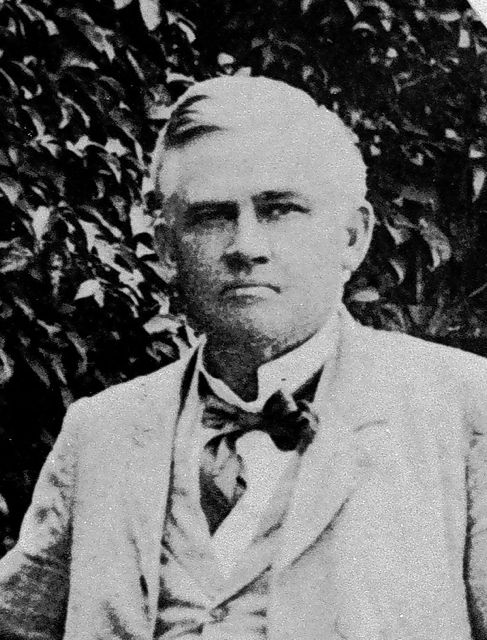 James Blount, who served by appointment of U.S. President Grover Cleveland as a Special Commissioner to investigate the overthrow of the Hawaiian Kingdom government on January 17, 1893, began his investigation in the Hawaiian Islands on April 1. For the next four months Special Commissioner Blount would submit periodic reports to U.S. Secretary of State Walter Gresham in Washington, D.C., which came to be known as the “Blount Reports.” On July 17, 1893, Blount submitted his final report. It was from these reports that Secretary of State Gresham would conclude the investigation and notify the President on October 18, 1893 that “should not the great wrong done to a feeble but independent State by an abuse of the authority of the United States be undone by restoring the legitimate government? Anything short of that will not, I respectfully submit, satisfy the demands of justice.” Here follows a portion of the final report of July 17, 1893 that centers on the insurgents calling themselves the “Committee of Safety” and at the end identifies their nationalities (citizenry).
James Blount, who served by appointment of U.S. President Grover Cleveland as a Special Commissioner to investigate the overthrow of the Hawaiian Kingdom government on January 17, 1893, began his investigation in the Hawaiian Islands on April 1. For the next four months Special Commissioner Blount would submit periodic reports to U.S. Secretary of State Walter Gresham in Washington, D.C., which came to be known as the “Blount Reports.” On July 17, 1893, Blount submitted his final report. It was from these reports that Secretary of State Gresham would conclude the investigation and notify the President on October 18, 1893 that “should not the great wrong done to a feeble but independent State by an abuse of the authority of the United States be undone by restoring the legitimate government? Anything short of that will not, I respectfully submit, satisfy the demands of justice.” Here follows a portion of the final report of July 17, 1893 that centers on the insurgents calling themselves the “Committee of Safety” and at the end identifies their nationalities (citizenry).
**************************************************************
Special Commissioner James Blount reported:
Nearly all of the arms on the island of Oahu, in which Honolulu is situated, were in the possession of the Queen’s government. A military force, organized and drilled, occupied the station house, the barracks, and the palace—the only points of any strategic significance in the event of a conflict.
The great body of the people moved in their usual course. Women and children passed to and fro through the streets, seemingly unconscious of any impending danger, and yet there were secret conferences held by a small body of men, some of whom were Germans, some Americans, and some native-born subjects of foreign origin.
On Saturday evening, the 14th of January, they took up the subject of dethroning the Queen and proclaiming a new Government with a view of annexation to the United States.
The first and most momentous question with them was to devise some plan to have the United States troops landed. Mr. Thurston, who appears to have been the leading spirit, on Sunday sought two members of the Queen’s cabinet and urged them to head a movement against the Queen, and to ask Minister Stevens to land the troops, assuring them that in such an event Mr. Stevens would do so. Failing to enlist any of the Queen’s cabinet in the cause, it was necessary to devise some other mode to accomplish this purpose. A committee of safety, consisting of thirteen members, had been formed from a little body of men assembled in W. O. Smith’s office. A deputation of these, informing Mr. Stevens of their plans, arranged with him to land the troops if they would ask it “for the purpose of protecting life and property.” It was further agreed between him and them that in the event they should occupy the government building and proclaim a new government he would recognize it. The two leading members of the committee, Messrs. Thurston and Smith, growing uneasy as to the safety of their persons, went to him to know if he would protect them in the event of their arrest by the authorities, to which he gave his assent.
At the mass meeting, called by the committee of safety on the 16th of January, there was no communication to the crowd of any purpose to dethrone the Queen or to change the form of government, but only to authorize the committee to take steps to prevent a consummation of the Queen’s purposes and to have guarantees of public safety. The committee on public safety had kept their purposes from the public view at this mass meeting and at their small gatherings for fear of proceedings against them by the government of the Queen.
After the mass meeting had closed a call on the American minister for troops was made in the following terms, and signed indiscriminately by Germans, by Americans, and by Hawaiian subjects of foreign extraction:
Hawaiian Islands,
Honolulu, January 16, 1395.
To His Excellency John L. Stevens,
American Minister Resident:
SIR: We, the undersigned, citizens and residents of Honolulu, respectfully represent that, in view of recent public events in this Kingdom, culminating in the revolutionary acts of Queen Liliuokalani on Saturday last, the public safety is menaced and lives and property are in peril, and we appeal to you and the United States forces at your command for assistance.
The Queen, with the aid of armed force and accompanied by threats of violence and bloodshed from those with whom she was acting, attempted to proclaim a new constitution; and while prevented for the time from accomplishing her object, declared publicly that she would only defer her action.
This conduct and action was upon an occasion and under circumstances which have created general alarm and terror.
We are unable to protect ourselves without aid, and, therefore, pray for the protection of the United States forces.
Henry B. Cooper,
P.W. McChesney,
W.C. Wilder,
C. Bolte,
A. Brown,
William O. Smith,
Henry Waterhouse,
Theo. F. Lansing,
Ed. Suhr,
L. A. Thurston,
John Emmeluth,
Wm. B. Castle,
J.A. McCandless,
Citizen’s Committee of Safety.
The response to that call does not appear in the files or on the records of the American legation. It, therefore, can not speak for itself. The request of the committee of safety was, however, consented to by the American minister. The troops were landed.
On that very night the committee assembled at the house of Henry Waterhouse, one of its members, living the next door to Mr. Stevens, and finally determined on the dethronement of the Queen; selected its officers, civil and military, and adjourned to meet the next morning.
Col. J. H. Soper, an American citizen, was selected to command the military forces. At this Waterhouse meeting it was assented to by all that Mr. Stevens had agreed with the committee of safety that in the event it occupied the Government building and proclaimed a Provisional Government he would recognize it as a de facto government.
When the troops were landed on Monday evening, January 16, about 5 o’clock, and began their march through the streets with their small arms, artillery, etc., a great surprise burst upon the community. To but few was it understood. Not much time elapsed before it was given out by members of the committee of safety that they were designed to support them. At the palace, with the cabinet, amongst the leaders of the Queen’s military forces, and the great body of the people who were loyal to the Queen, the apprehension came that it was a movement hostile to the existing Government. Protests were filed by the minister of foreign affairs and by the governor of the island against the landing of the troops.
Messrs. Parker and Peterson testify that on Tuesday at 1 o’clock they called on Mr. Stevens, and by him were informed that in the event the Queen’s forces assailed the insurrectionary forces he would intervene.
At 2:30 o’clock of the same day the members of the Provisional Government proceeded to the Government building in squads and read their proclamation. They had separated in their in march to the Government building for fear of observation and arrest. There was no sign of an insurrectionary soldier on the street. The committee of safety sent to the Government building a Mr. A. S. Wilcox to see who was there and on being informed that there were no Government forces on the grounds proceeded in the manner I have related and read; their proclamation. Just before concluding the reading of this instrument fifteen volunteer troops appeared. Within a half hour afterward some thirty or forty made their appearance.
A part of the Queen’s forces, numbering 224, were located at the station house, about one-third of a mile from the Government building. The Queen, with a body of 50 troops, was located at the palace, north of the Government building about 400 yards. A little northeast of the palace and some 200 yards from it, at the barracks, was another body of 272 troops. These forces had 14 pieces of artillery, 386 rifles, and 16 revolvers. West of the Government building and across a narrow street were posted Capt. Wiltse and his troops, these likewise having artillery and small-arms.
The Government building is in a quadrangular-shaped piece of ground surrounded by streets. The American troops were so posted as to be in front of any movement of troops which should approach the Government building on three sides, the fourth being occupied by themselves. Any attack on the Government building from the east side would expose the American troops to the direct fire of the attacking force. Any movement of troops from the palace toward the Government building in the event of a conflict between the military forces would have exposed them to the fire of the Queen’s troops. In fact, it would have been impossible for a struggle between the Queen’s forces and the forces of the committee of safety to have taken place without exposing them to the shots of the Queen’s forces. To use the language of Admiral Skerrett, the American troops were well located if designed to promote the movement for the Provisional Government and very improperly located if only intended to protect American citizens in person and property.
They were doubtless so located to suggest to the Queen and her counselors that they were in cooperation with the insurrectionary movement, and would when the emergency arose manifest it by active support.
It did doubtless suggest to the men who read the proclamation that they were having the support of the American minister and naval commander and were safe from personal harm.
Why had the American minister located the troops in such a situation and then assured the members of the committee of safety that on their occupation of the Government building he would recognize it as a government de facto, and as such give it support? Why was the Government building designated to them as the place which, when their proclamation was announced therefrom, would be followed by his recognition. It was not a point of any strategic consequence. It did not involve the employment of a single soldier.
A building was chosen where there were no troops stationed, where there was no struggle to be made to obtain access, with an American force immediately contiguous, with the mass of the population impressed with its unfriendly attitude. Aye, more than this—before any demand for surrender had even been made on the Queen or on the commander or any officer of any of her military forces at any of the points where her troops were located, the American minister had recognized the Provisional Government and was ready to give it the support of the United States troops!
Mr. Damon, the vice-president of the Provisional Government and a member of the advisory council, first went to the station house, which was in command of Marshal Wilson. The cabinet was there located. The vice-president importuned the cabinet and the military commander to yield up the military forces on the ground that the American minister had recognized the Provisional Government and that there ought to be no blood shed.
After considerable conference between Mr. Damon and the ministers he and they went to the government building.
The cabinet then and there was prevailed upon to go with the vice-president and some other friends to the Queen and urge her to acquiesce in the situation. It was pressed upon her by the ministers and other persons at that conference that it was useless for her to make any contest, because it was one with the United States; that she could file her protest against what had taken place and would be entitled to a hearing in the city of Washington. After consideration of more than an hour she finally concluded, under the advice of her cabinet and friends, to order the delivery up of her military forces to the Provisional Government under protest. That paper is in the following form:
I, Liliuokalani, by the grace of God and under the constitution of the Hawaiian Kingdom, Queen, do hereby solemnly protest against any and all acts done against myself and the constitutional Government of the Hawaiian Kingdom by certain persons claiming to have established a provisional government of and for this Kingdom.
That I yield to the superior force of the United States of America, whose minister plenipotentiary, His Excellency John L. Stevens, has caused United States troops to be landed at Honolulu and declared that he would support the said provisional government.
Now, to avoid any collision of armed forces and perhaps the loss of life, I do, under this protest, and impelled by said force, yield my authority until such time as the Government of the United States shall, upon the facts being presented to it, undo the action of its representatives and reinstate me in the authority which I claim as the constitutional sovereign of the Hawaiian Islands.
Done at Honolulu this 17th day of January, A. D. 1893.
Liliuokalani R.
Samuel Parker,
Minister of Foreign Affairs.
Wm H. Cornwell,
Minister of finance.
Jno. F. Colburn,
Minister of the Interior.
A.P. Peterson,
Attorney- General.
All this was accomplished without the firing of a gun, without a demand for surrender on the part of the insurrectionary forces until they had been converted into a de facto government by the recognition of the American minister with American troops, then ready to interfere in the event of an attack.
In pursuance of a prearranged plan, the Government thus established hastened off commissioners to Washington to make a treaty for the purpose of annexing the Hawaiian Islands to the United States.
During the progress of the movement the committee of safety, alarmed at the fact that the insurrectionists had no troops and no organization, dispatched to Mr. Stevens three persons, to wit, Messrs. L. A. Thurston, W. C. Wilder, and H. F. Glade, “to inform him of the situation and ascertain from him what if any protection or assistance could be afforded by the United States forces for the protection of life and property, the unanimous sentiment and feeling being that life and property were in danger.” Mr. Thurston is a native-born subject; Mr. Wilder is of American origin, but has absolved his allegiance to the United States and is a naturalized subject; Mr. Glade is a German subject.
The declaration as to the purposes of the Queen contained in the formal request for the appointment of a committee of safety in view of the facts which have been recited, to wit, the action of the Queen and her cabinet, the action of the Royalist mass meeting, and the peaceful movement of her followers, indicating assurances of their abandonment, seem strained in so far as any situation then requiring the landing of troops might exact.
The request was made, too, by men avowedly intending to overthrow the existing government and substitute a provisional government therefor, and who, with such purpose in progress of being effected, could not proceed therewith, but fearing arrest and imprisonment and without any thought of abandoning that purpose, sought the aid of the American troops in this situation to prevent any harm to their persons and property. To consent to an application for such a purpose without any suggestion dissuading the applicants from it on the part of the American minister, with naval forces under his command, could not otherwise be construed than as complicity with their plans.
The committee, to use their own language, say: “We are unable to protect ourselves without aid, and, therefore, pray for the protection of the United States forces.”
In less than thirty hours the petitioners have overturned the throne, established a new government, and obtained the recognition of foreign powers.
Let us see whether any of these petitioners are American citizens, and if so whether they were entitled to protection, and if entitled to protection at this point whether or not subsequently thereto their conduct was such as could be sanctioned as proper on the part of American citizens in a foreign country.
 Mr. Henry E. Cooper is an American citizen; was a member of the committee of safety; was a participant from the beginning in their schemes to overthrow the Queen, establish a Provisional Government, and visited Capt. Wiltse’s vessel, with a view of securing the aid of American troops, and made an encouraging report thereon. He, an American citizen, read the proclamation dethroning the Queen and establishing the Provisional Government.
Mr. Henry E. Cooper is an American citizen; was a member of the committee of safety; was a participant from the beginning in their schemes to overthrow the Queen, establish a Provisional Government, and visited Capt. Wiltse’s vessel, with a view of securing the aid of American troops, and made an encouraging report thereon. He, an American citizen, read the proclamation dethroning the Queen and establishing the Provisional Government.
Mr. F. W. McChesney is an American citizen; was cooperating in the revolutionary movement, and had been a member of the advisory council from its inception.
Mr. W. C. Wilder is a naturalized citizen of the Hawaiian Islands, owing no allegiance to any other country. He was one of the original members of the advisory council, and one of the orators in the mass meeting on the morning of January 16.
Mr. C. Bolte is of German origin, but a regularly naturalized citizen of the Hawaiian Islands.
Mr. A. Brown is a Scotchman and has never been naturalized.
Mr. W. O. Smith is a native of foreign origin and a subject of the Islands.
Mr. Henry Waterhouse, originally from Tasmania, is a naturalized citizen of the islands.
Mr. Theo. F. Lansing is a citizen of the United States, owing and claiming allegiance thereto. He has never been naturalized in this country.
Mr. Ed. Suhr is a German subject.
Mr. L. A. Thurston is a native-born subject of the Hawaiian Islands, of foreign origin.
Mr. John Emmeluth is an American citizen.
Mr. W. it Castle is a Hawaiian of foreign parentage.
Mr. J. A. McCandless is a citizen of the United States—never having been naturalized here.
Six are Hawaiians subjects; five are American citizens; one English, and one German. A majority are foreign subjects.
It will be observed that they sign as “Citizens’ committee of safety.”
This is the first time American troops were ever landed on these islands at the instance of a committee of safety without notice to the existing government.
It is to be observed that they claim to be a citizens’ committee of safety and that they are not simply applicants for the protection of the property and lives of American citizens.
The chief actors in this movement were Messrs. L. A. Thurston and W.O. Smith.
The Hawaiian Sovereignty Movement: Operating on a False Premise
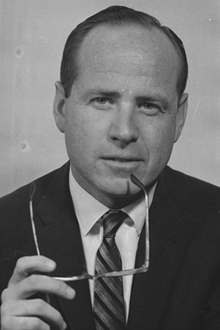 The Hawaiian sovereignty movement appears to have grown out of a social movement in the islands in the mid-20th century. According to one scholar, Professor Lawrence Fuchs’ Hawai‘i Pono: A Social History (1961), p. 68, “the essential purpose of the haole [foreigner] elite for four decades after annexation was to control Hawai‘i; the major aim for the lesser haoles was to promote and maintain their privileged position…Most Hawaiians were motivated by a dominant and inclusive purpose—to recapture the past.”
The Hawaiian sovereignty movement appears to have grown out of a social movement in the islands in the mid-20th century. According to one scholar, Professor Lawrence Fuchs’ Hawai‘i Pono: A Social History (1961), p. 68, “the essential purpose of the haole [foreigner] elite for four decades after annexation was to control Hawai‘i; the major aim for the lesser haoles was to promote and maintain their privileged position…Most Hawaiians were motivated by a dominant and inclusive purpose—to recapture the past.”
Native Hawaiians were experiencing a sense of revival of Hawaiian culture, language, arts and music—euphoria of native Hawaiian pride. Momi Kamahele in her article, Ilio‘ulaokalani: Defending Native Hawaiian Culture, Amerasia Journal (2000), p. 40, states that “the ancient form of hula experienced a strong revival as the Native national dance for our own cultural purposes and enjoyment rather than as a service commodity for the tourist industry.” The sovereignty movement also resulted in the revitalization of 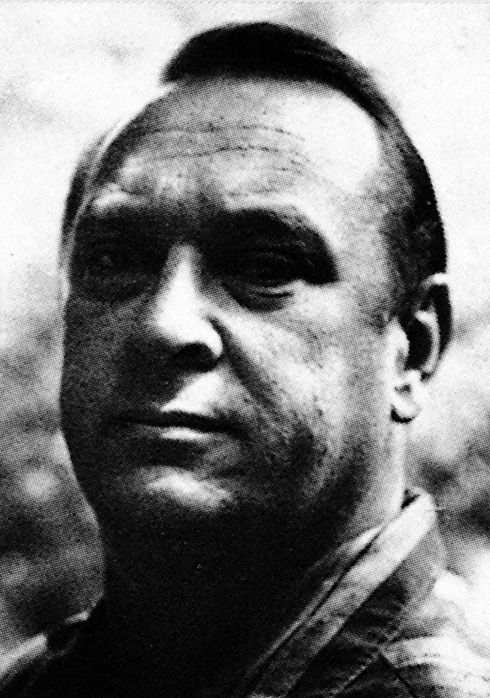 “the Hawaiian language through immersion education.” John Dominis Holt, author of the 1964 book On Being Hawaiian (1995), p. 7, is credited for igniting the resurgence of native Hawaiian consciousness.
“the Hawaiian language through immersion education.” John Dominis Holt, author of the 1964 book On Being Hawaiian (1995), p. 7, is credited for igniting the resurgence of native Hawaiian consciousness.
“I am a part-Hawaiian who has for years felt troubled concern over the loss of Hawaiianness or ethnic consciousness among people like ourselves. So much that came down to us was garbled or deliberately distorted. It was difficult to separate truth from untruth; to clarify even such simple matters for many among us as the maiden name of a Hawaiian grandmother, let alone know anything at all of the Hawaiian past.”
 Tom Coffman, Nation Within (1999), p. xii, explained that when he “arrived in Hawai‘i in 1965, the effective definition of history had been reduced to a few years. December 7, 1941, was practically the beginning of time, and anything that might have happened before that was prehistory.” Coffman admits that when he wrote his first book in 1970 he used Statehood in 1959 as an important benchmark in Hawaiian history. The first sentence in chapter one of this book reads, the “year 1970 was only the eleventh year of statehood, so that as a state Hawai‘i was still young, still enthralled by the right to self-government, still feeling out its role as America’s newest state.” He recollected in a another book, Catch a Wave: A Case Study of Hawai‘i’s New Politics (1973), p. 1:
Tom Coffman, Nation Within (1999), p. xii, explained that when he “arrived in Hawai‘i in 1965, the effective definition of history had been reduced to a few years. December 7, 1941, was practically the beginning of time, and anything that might have happened before that was prehistory.” Coffman admits that when he wrote his first book in 1970 he used Statehood in 1959 as an important benchmark in Hawaiian history. The first sentence in chapter one of this book reads, the “year 1970 was only the eleventh year of statehood, so that as a state Hawai‘i was still young, still enthralled by the right to self-government, still feeling out its role as America’s newest state.” He recollected in a another book, Catch a Wave: A Case Study of Hawai‘i’s New Politics (1973), p. 1:
“Many years passed before I realized that for Native Hawaiians to survive as a people, they needed a definition of time that spanned something more than eleven years. The demand for a changed understanding of time was always implicit in what became known as the Hawaiian movement or the Hawaiian Renaissance because Hawaiians so systematically turned to the past whenever the subject of Hawaiian life was glimpsed.”
The native Hawaiian community had been the subject of extreme prejudice and political exclusion since the United States imposed its authority in the Hawaiian Islands in 1898, and the history books that followed routinely portrayed the native Hawaiian as passive and inept. Holt explained, p. 7, that after the overthrow of the Hawaiian Kingdom the self respect of native Hawaiians had been “undermined by carping criticism of ‘Hawaiian beliefs’ and stereotypes concerning our being lazy, laughing, lovable children who needed to be looked after by more ‘realistic’ adult-oriented caretakers came to be the new accepted view of Hawaiians.” This stereotyping became institutionalized, and is evidenced in the writings by Professor Gavan Daws, an American historian, who wrote in 1974, Shoal of Time, p. 291:
 The Hawaiians had lost much of their reason for living long ago, when the kapus were abolished; since then a good many of them had lost their lives through disease; the survivors lost their land; they lost their leaders, because many of the chiefs withdrew from politics in favor of nostalgic self-indulgence; and now at last they lost their independence. Their resistance to all this was feeble. It was almost as if they believed what the white man said about them, that they had only half learned the lessons of civilization.
The Hawaiians had lost much of their reason for living long ago, when the kapus were abolished; since then a good many of them had lost their lives through disease; the survivors lost their land; they lost their leaders, because many of the chiefs withdrew from politics in favor of nostalgic self-indulgence; and now at last they lost their independence. Their resistance to all this was feeble. It was almost as if they believed what the white man said about them, that they had only half learned the lessons of civilization.
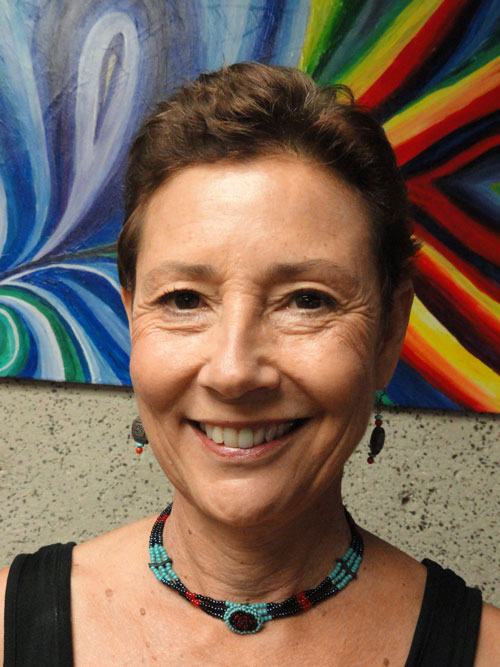 Although the Hawaiian Renaissance movement originally had no clear political objectives, it did foster a genuine sense of inquiry and thirst for an alternative Hawaiian history that was otherwise absent in contemporary history books. Professor Noenoe Silva’s Aloha Betrayed: Native Hawaiian Resistance to American Colonization (2004), p. 3, a political scientist, states, “When the stories can be validated, as happens when scholars read the literature in Hawaiian and make the findings available to the community, people begin to recover from the wounds caused by that disjuncture in their consciousness.”
Although the Hawaiian Renaissance movement originally had no clear political objectives, it did foster a genuine sense of inquiry and thirst for an alternative Hawaiian history that was otherwise absent in contemporary history books. Professor Noenoe Silva’s Aloha Betrayed: Native Hawaiian Resistance to American Colonization (2004), p. 3, a political scientist, states, “When the stories can be validated, as happens when scholars read the literature in Hawaiian and make the findings available to the community, people begin to recover from the wounds caused by that disjuncture in their consciousness.”
As a result, Native Hawaiians began to draw meaning and political activism from a history that appeared to parallel other native peoples of the world who had been colonized, but the interpretive context of Hawaiian history was, at the time, primarily 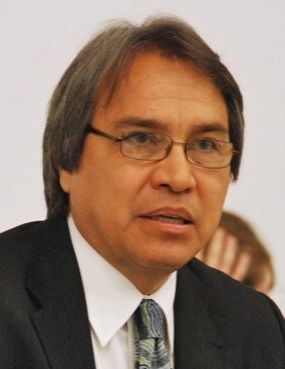 historical and not legal. State sovereignty and international laws were perceived not as a benefit for native peoples, but were seen as tools of the colonizer. According to Professor James Anaya’s Indigenous Peoples in International Law (2000), p. 22, who specializes in the rights of indigenous peoples, “international law was thus able to govern the patterns of colonization and ultimately to legitimate the colonial order.”
historical and not legal. State sovereignty and international laws were perceived not as a benefit for native peoples, but were seen as tools of the colonizer. According to Professor James Anaya’s Indigenous Peoples in International Law (2000), p. 22, who specializes in the rights of indigenous peoples, “international law was thus able to govern the patterns of colonization and ultimately to legitimate the colonial order.”
Following the course Congress set in the 1971 Alaska Native Claims Settlement Act, under which “the United States returned 40 million acres of land to the Alaskan natives and paid $1 billion cash for land titles they did not return,” it became common practice for Native Hawaiians to associate themselves with the plight of Native Americans and other ethnic minorities throughout the world who had been colonized and dominated by Europe or the United States.
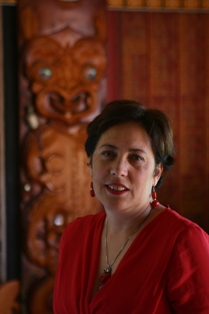 The Hawaiian Renaissance gradually branched out to include a political wing often referred to as the “sovereignty movement,” which evolved into political resistance against U.S. sovereignty. As native Hawaiians began to organize, their political movement “paralleled the activism surrounding the civil rights movement, women’s liberation, student uprisings and the anti-Vietnam War movement,” explained Professor Linda Tuhiwai Smith, Decolonizing Methodologies: Research and Indigenous Peoples (1999), p. 113.
The Hawaiian Renaissance gradually branched out to include a political wing often referred to as the “sovereignty movement,” which evolved into political resistance against U.S. sovereignty. As native Hawaiians began to organize, their political movement “paralleled the activism surrounding the civil rights movement, women’s liberation, student uprisings and the anti-Vietnam War movement,” explained Professor Linda Tuhiwai Smith, Decolonizing Methodologies: Research and Indigenous Peoples (1999), p. 113.
In 1972, an organization called A.L.O.H.A. (Aboriginal Lands of Hawaiian Ancestry) was founded to seek reparations from the United States for its involvement in the illegal overthrow of the Hawaiian Kingdom government in 1893. Frustrated with inaction by the United States it joined another group called Hui Ala Loa (Long Road Organization) and formed Protect Kaho’olawe ‘Ohana (P.K.O.) in 1975. P.K.O. was organized to stop the U.S. Navy from utilizing the island of Kaho’olawe, off the southern coast of Maui, as a target range by openly occupying the island in defiance of the U.S. military. The U.S. Navy had been using the entire island as a target range for naval gunfire since World War II, and as a result of P.K.O.’s activism, the Navy terminated its use of the island in 1994. Another organization called ‘Ohana O Hawai‘i (Family of Hawai‘i), formed in 1974, even went to the extreme measure of proclaiming a declaration of war against the United States of America.
The political movements also served as the impetus for native Hawaiians to participate in the State of Hawai‘i’s Constitutional Convention in 1978, which resulted in the creation of the Office of Hawaiian Affairs (O.H.A.). O.H.A. recognizes two definitions of aboriginal Hawaiian: the term “native Hawaiian” with a lower case “n,” and “Native Hawaiian” with an upper case “N,” both of which were established by the U.S. Congress. The former is defined by the 1921 Hawaiian Homestead Commission Act as “any descendant of not less than one-half part of the blood of the races inhabiting the Hawaiian Islands previous to 1778,” while the latter is defined by the 1993 Apology Resolution as “any individual who is a descendent of the aboriginal people who, prior to 1778, occupied and exercised sovereignty in the area that now constitutes the State of Hawai‘i.” The intent of the Apology resolution was to offer an apology to all Native Hawaiians, without regard to blood quantum, while the Hawaiian Homes Commission Act’s definition was intended to limit those receiving homestead lots to be “not less than one-half” of native Hawaiian descent by blood. O.H.A. states that it serves both definitions of Hawaiian. As a governmental agency, O.H.A.’s mission is to:
“…malama (protect) Hawai‘i’s people and environmental resources and OHA’s assets, toward ensuring the perpetuation of the culture, the enhancement of lifestyle and the protection of entitlements of Native Hawaiians, while enabling the building of a strong and healthy Hawaiian people and nation, recognized nationally and internationally.”
The sovereignty movement created a multitude of diverse groups, each having an agenda as well as varying interpretations of Hawaiian history. Operating within an ethnic or tribal optic stemming from the Native-American movement in the United States, the sovereignty movement in Hawai‘i eventually expanded itself to become a part of the global movement of indigenous peoples who, according to Ivison, Patton & Sanders’ Political Theory and the Rights of Indigenous Peoples (2000), p. 89, reject colonial “arrangements in exchange for indigenous modes of self-determination that sharply curtail the legitimacy and jurisdiction of the State while bolstering indigenous jurisdiction over land, identity and political voice.”
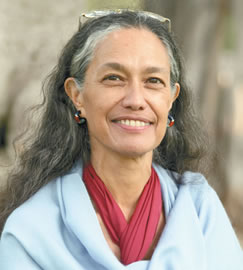 In her article Settlers of Color and “Immigrant” Hegemony: “Locals” in Hawai‘i, Amerasia (2000), p. 17, Professor Haunani-Kay Trask, an indigenous peoples’ rights advocate, argues that “documents like the Draft Declaration [of Indigenous Human Rights] are used to transform and clarify public discussion and agitation.” Specifically, Trask states that, “legal terms of reference, indigenous human rights concepts in international usage, and the political linkage of the non-self-governing status of the Hawaiian nation with other non-self-governing indigenous nations move Hawaiians into a world arena where Native peoples are primary and dominant states are secondary to the discussion.”
In her article Settlers of Color and “Immigrant” Hegemony: “Locals” in Hawai‘i, Amerasia (2000), p. 17, Professor Haunani-Kay Trask, an indigenous peoples’ rights advocate, argues that “documents like the Draft Declaration [of Indigenous Human Rights] are used to transform and clarify public discussion and agitation.” Specifically, Trask states that, “legal terms of reference, indigenous human rights concepts in international usage, and the political linkage of the non-self-governing status of the Hawaiian nation with other non-self-governing indigenous nations move Hawaiians into a world arena where Native peoples are primary and dominant states are secondary to the discussion.”
This political wing of the renaissance is not in any way connected to the legal position that the Hawaiian Kingdom continued to exist as a sovereign State under international law, but rather focuses on the history of European and American colonialism and the prospect of decolonization. As a result, sovereignty is not viewed as a legal reality, but a political aspiration.
 According to Professor Noel Kent’s Hawai‘i: Islands under the Influence (1993), p. 198, the “Hawaiian sovereignty movement is now clearly the most potent catalyst for change,” and “during the late 1980s and early 1990s sovereignty was transformed from an outlandish idea propagated by marginal groups into a legitimate political position supported by a majority of native Hawaiians.” The political activism relied on the normative framework of the developing rights of indigenous peoples within the United States and at the United Nations. At both these levels, indigenous peoples were viewed not as sovereign States, but rather non-State nations. According to Corntassel & Primeau’s article Indigenous “Sovereignty” and International Law: Revised Strategies for Pursuing “Self-Determination, Human Rights Quarterly (1995), p. 347, “indigenous peoples were viewed not as sovereign states, but rather ‘any stateless group’ residing within the territorial dominions of existing sovereign states.”
According to Professor Noel Kent’s Hawai‘i: Islands under the Influence (1993), p. 198, the “Hawaiian sovereignty movement is now clearly the most potent catalyst for change,” and “during the late 1980s and early 1990s sovereignty was transformed from an outlandish idea propagated by marginal groups into a legitimate political position supported by a majority of native Hawaiians.” The political activism relied on the normative framework of the developing rights of indigenous peoples within the United States and at the United Nations. At both these levels, indigenous peoples were viewed not as sovereign States, but rather non-State nations. According to Corntassel & Primeau’s article Indigenous “Sovereignty” and International Law: Revised Strategies for Pursuing “Self-Determination, Human Rights Quarterly (1995), p. 347, “indigenous peoples were viewed not as sovereign states, but rather ‘any stateless group’ residing within the territorial dominions of existing sovereign states.”
When the General Synod of the United Church of Christ (UCC) passed a resolution “Recognizing the Rights of Native Hawaiians to Self-Governance and Self-determination” in 1991, it was heralded as the beginning of a reconciliatory process between native and non-native Hawaiians for the 1893 overthrow of the Hawaiian Kingdom government. This resolution prompted the President of the UCC, in 1993, to issue a formal apology and committed the church to redress the wrongs done to native  Hawaiians. In Professor Andrew H. Walsh’s Historical Memorandum on the Hawaiian Revolution of 1893 for the UCC’s Sovereignty Project (1992), p. 24, who was commissioned by the UCC’s Sovereignty Project to assist UCC officials in preparing a statement of apology in 1993, found that certain members of the Hawaiian Evangelical Association were complicit in the overthrow of the Hawaiian Kingdom government:
Hawaiians. In Professor Andrew H. Walsh’s Historical Memorandum on the Hawaiian Revolution of 1893 for the UCC’s Sovereignty Project (1992), p. 24, who was commissioned by the UCC’s Sovereignty Project to assist UCC officials in preparing a statement of apology in 1993, found that certain members of the Hawaiian Evangelical Association were complicit in the overthrow of the Hawaiian Kingdom government:
“The Christian church founded by American missionaries in Hawai‘i played no direct role in the Hawaiian Revolution of 1893. The Hawaiian Evangelical Association was, however, clearly under the control of white leaders who backed the revolution and attempted—at some cost—to influence indigenous Hawaiians to accept its outcome. The church’s leaders endorsed the revolution in their correspondence with Congregational officials in the United States and vigorously attempted to enlist American Protestant support for annexation. In addition, several individual ministers of the HEA played active roles as advocates of the revolution to the American public.”
The UCC’s Redress Plan included multi-million dollar reparations and the transference of six parcels of land on five islands to Native Hawaiian churches, the Association of 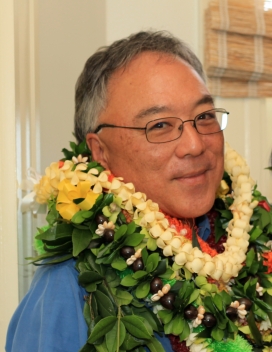 Hawaiian Evangelical Churches, and the Pu‘a Foundation. Professor Eric Yamamoto, a legal expert in reconciliation, in his book Interracial Justice: Conflict & Reconciliation in Post-Civil Rights America (1999), p. 215, views these reconciliatory efforts by the UCC within the framework of post-colonial theory in post-civil rights America, and focuses on interracial justice for Native Hawaiians within the United States legal system—an approach similar to the “United States’ 1988 apology to and monetary reparations for Japanese Americans wrongfully interned during World War II.” Yamamoto and other contemporary scholars, view the U.S. takeover of the Hawaiian Islands as fait accompli—a history and consequence no different than other colonial takeovers throughout the world of indigenous people and their lands by western powers.
Hawaiian Evangelical Churches, and the Pu‘a Foundation. Professor Eric Yamamoto, a legal expert in reconciliation, in his book Interracial Justice: Conflict & Reconciliation in Post-Civil Rights America (1999), p. 215, views these reconciliatory efforts by the UCC within the framework of post-colonial theory in post-civil rights America, and focuses on interracial justice for Native Hawaiians within the United States legal system—an approach similar to the “United States’ 1988 apology to and monetary reparations for Japanese Americans wrongfully interned during World War II.” Yamamoto and other contemporary scholars, view the U.S. takeover of the Hawaiian Islands as fait accompli—a history and consequence no different than other colonial takeovers throughout the world of indigenous people and their lands by western powers.
The UCC apology also prompted the Congress to pass a joint resolution in 1993 apologizing only to the Native Hawaiian people, rather than to the entire citizenry of the Hawaiian Kingdom, for the United States’ role in the overthrow of the Hawaiian government. This resolution maintained an indigenous and historically inaccurate focus that implied that only ethnic Hawaiians constituted the kingdom, and fertilized the incipient ethnocentrism of the sovereignty movement. The Resolution provided:
“Congress…apologizes to the Native Hawaiians on behalf of the people of the United States for the overthrow of the Kingdom of Hawai‘i on January 17, 1893 with the participation of agents and citizens of the United States, and the deprivation of the rights of Native Hawaiians to self-determination.”
The Congressional apology rallied many Native Hawaiians, who were not fully aware of the legal status of the Hawaiian Islands as a sovereign State, in the belief that their situation had similar qualities to Native-American tribes in the nineteenth century. The resolution reinforced the belief of a native Hawaiian nation grounded in Hawaiian indigeneity and culture, rather than an occupied State under prolonged occupation.
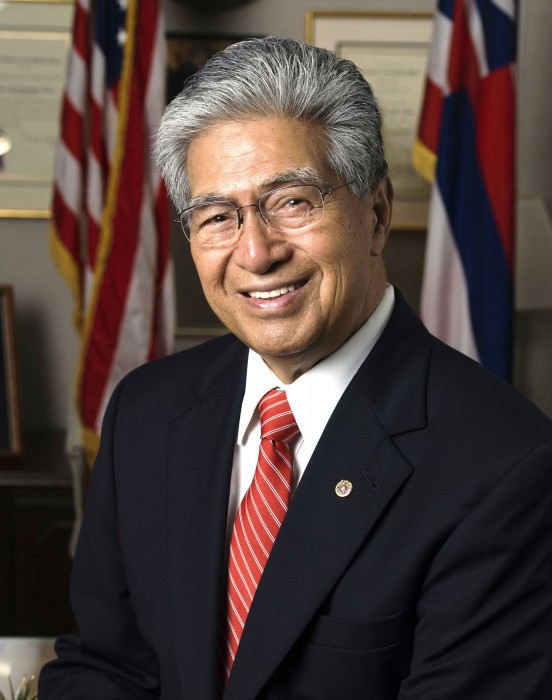 Consistent with the Apology Resolution, Senator Akaka attempted five times since 2000 to have the Senate pass a bill that would provide for federal recognition of tribal status for Native Hawaiians. On February 4, 2009, he reintroduced Senate Bill 381 for the sixth time, known as the Akaka Bill, to the 111th Congress. According to Akaka, the bill’s purpose is to provide “a process within the framework of Federal law for the Native Hawaiian people to exercise their inherent rights as a distinct aboriginal, indigenous, native community to reorganize a Native Hawaiian government for the purpose of giving expression to their rights as native people to self-determination and self-governance.”
Consistent with the Apology Resolution, Senator Akaka attempted five times since 2000 to have the Senate pass a bill that would provide for federal recognition of tribal status for Native Hawaiians. On February 4, 2009, he reintroduced Senate Bill 381 for the sixth time, known as the Akaka Bill, to the 111th Congress. According to Akaka, the bill’s purpose is to provide “a process within the framework of Federal law for the Native Hawaiian people to exercise their inherent rights as a distinct aboriginal, indigenous, native community to reorganize a Native Hawaiian government for the purpose of giving expression to their rights as native people to self-determination and self-governance.”
According to Professor Rupert Emerson, an international law scholar, in his article Self-Determination, American Journal of International Law (1971), p. 463, there are two major periods when the international community accepted self-determination as an operative right or principle. President Woodrow Wilson and others first applied the principle to nations directly affected by the “defeat or collapse of the German, Russian, Austro-Hungarian and Turkish land empires” after the First World War. The second period took place after the Second World War and the United Nations’ focus on disintegrating overseas empires of its member states, “which had remained effectively untouched in the round of Wilsonian self-determination.”
These territories have come to be known as Mandate, Trust, and Article 73(e) territories under the United Nations Charter. Because Native Hawaiians were erroneously categorized as a stateless people, the principle of self-determination would underlie the development of legislation such as the Akaka bill.
In 2011, the State of Hawai‘i enacted their version of the Akaka Bill that established a Native Hawaiian Roll Commission called Act 195, which provided “Native Hawaiians as the only indigenous, aboriginal, maoli population of Hawai‘i.” Act 195 also committed the State of Hawai‘i “to support the continuing development of a reorganized Native Hawaiian governing entity and, ultimately, the federal recognition of Native Hawaiians.” The Roll Commission will “determine eligible individuals that with to participate in the process of reorganizing a Native Hawaiian government for the purposes of Native-Hawaiian self-governance recognized by the State of Hawai‘i. Act 195 also expresses the State’s desire to support federal government recognition of a Native Hawaiian government.” Act 195 also provides that OHA will house the Commission and is responsible for it’s funding. The text of Act 195 is replete with inaccuracies and admissions to violations of the law of occupation.
The identification of Native Hawaiians as an indigenous people with a right to self-determination relies upon the U.S. National Security Council’s position on indigenous peoples. On January 18, 2001, the Council made known its position to its delegations assigned to the “U.N. Commission on Human Rights,” the “Commission’s Working Group on the United Nations (UN) Draft Declaration on Indigenous Rights,” and to the “Organization of American States (OAS) Working Group to Prepare the Proposed American Declaration on the Rights of Indigenous Populations.” The Council directed these delegates to “read a prepared statement that expresses the U.S. understanding of the term internal ‘self-determination’ and indicates that it does not include a right of independence or permanent sovereignty over natural resources.”
The Council also directed these delegates to support the use of the term internal self-determination in both the U.N. and O.A.S. declarations on indigenous rights, and definedIndigenous Peoples as having “a right of internal self-determination.” By virtue of that right, “they may negotiate their political status within the framework of the existing nation-state and are free to pursue their economic, social, and cultural development. This resolution sought to constrain the growing political movement of indigenous peoples “who aspire to rule their territorial homeland, or who claim the right to independent statehood under the doctrine of self-determination of peoples.”
The sovereignty movement and Kana‘iolowalu falsely maintains that aboriginal Hawaiians have a right to self-determination, which implies that aboriginal Hawaiians were never nationals of a sovereign and independent State. Self-determination also implies that aboriginal Hawaiians are an ethnic group residing within the United States of America. Hawaiian history cannot support this position. Aboriginal Hawaiians are the majority of the population of Hawaiian subjects who have been subjected to Americanization and indoctrination. As an occupied State under an illegal and prolonged occupation, the proper framework to understand Hawai‘i’s unique situation is through international law and the laws of occupation and not through the laws of the United States, and, by extension, the laws of the State of Hawai‘i. In this way, Hawai‘i’s vibrant political and legal history is not only embraced, but is honored and respected.
University of Hawai‘i Libraries Special Collection: The 1897 Petitions Protesting Annexation
University of Hawai‘i Libraries Special Collection – The 1897 Petitions Protesting Annexation by Professor Noenoe K. Silva
When William McKinley won the presidential election in November of 1896, the question of Hawaii’s annexation to the U.S. was again opened. The previous president, Grover Cleveland, was a friend of Queen Liliuokalani. He had remained opposed to annexation until the end of his term, but McKinley was open to persuasion by U. S. expansionists and by annexationists from Hawaii. He agreed to meet with a committee of annexationists from Hawaii, Lorrin Thurston, Francis Hatch and William Kinney. After negotiations, in June of 1897, McKinley signed a treaty of annexation with these representatives of the Republic of Hawaii. The President then submitted the treaty to the U. S. Senate for approval.
The Hui Aloha Aina for Women, the Hui Aloha Aina for Men, and the Hui Kalaiaina formed a coalition to oppose the treaty. Together, these three organizations represented a majority of the Kanaka Maoli (Native Hawaiians). Hui Kalaiaina had originally been formed after the Bayonet Constitution of 1887 as a vehicle for Kanaka Maoli political power. The two Hui Aloha Aina organizations were founded just after the overthrow of the Native government in 1893, expressly to support the Queen and to oppose U.S. annexation.
The Kanaka Maoli believed that the American government was committed to their stated principles of justice and of government of the people, by the people, and for the people. They believed that once the U.S. President and members of Congress saw that the great majority of Hawaiian citizens opposed the annexation, the principles of fairness would prevail, that is, their Native government would be restored. The three huis therefore began to organize mass petition drives The heading on Hui Aloha Aina’s petition read: PALAPALA HOOPII KUE HOOHUI AINA, Petition Protesting Annexation
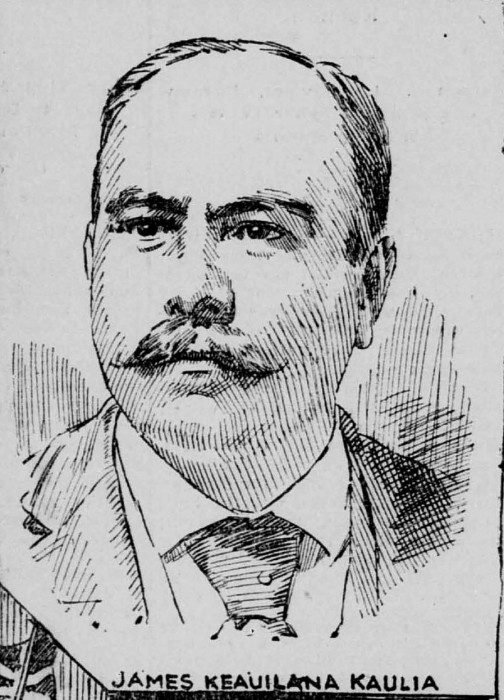 On September 6, 1897, the Hui Aloha Aina held a halawai makaainana – a mass meeting – , at Palace Square, which thousands of poe aloha aina – patriots – attended. President James Kaulia gave a rousing speech, saying “We, the nation (lahui) will never consent to the annexation of our lands, until the very last patriot lives.” He said agreeing to annexation was like agreeing to be buried alive. He predicted that annexation would open the door for many foreigners to come here, and to take jobs and resources away from the Native people. He asked, “Then where will we live?” The crowd answered, “In the mountains,” which figuratively means, “we shall be homeless.” He asserted that a mass refusal by the people could prevent the annexation: “If the nation remains steadfast in its protest of annexation, the Senate can continue to strive until the rock walls of Iolani Palace crumble, and never will Hawaii be annexed to America!” The annexationist newspapers had published threats that the leaders of the mass meeting would be arrested for treason, but Mr. Kaulia assured the people that their assembly was legal. He said that it was because the brains of the government could not push over the brains of the Kanaka Maoli that the government had to resort to weapons of war. (At this time, Hawaii was ruled by a haole – European- American – oligarchy called the Republic of Hawaii that had deprived the Native people of political participation.) He said, “Let us take up the honorable field of struggle, brain against brain.” He told the people, “Do not be afraid, be steadfast in aloha for your land and be united in thought. Protest forever the annexation of Hawaii until the very last aloha aina [lives]!” The crowd cheered.
On September 6, 1897, the Hui Aloha Aina held a halawai makaainana – a mass meeting – , at Palace Square, which thousands of poe aloha aina – patriots – attended. President James Kaulia gave a rousing speech, saying “We, the nation (lahui) will never consent to the annexation of our lands, until the very last patriot lives.” He said agreeing to annexation was like agreeing to be buried alive. He predicted that annexation would open the door for many foreigners to come here, and to take jobs and resources away from the Native people. He asked, “Then where will we live?” The crowd answered, “In the mountains,” which figuratively means, “we shall be homeless.” He asserted that a mass refusal by the people could prevent the annexation: “If the nation remains steadfast in its protest of annexation, the Senate can continue to strive until the rock walls of Iolani Palace crumble, and never will Hawaii be annexed to America!” The annexationist newspapers had published threats that the leaders of the mass meeting would be arrested for treason, but Mr. Kaulia assured the people that their assembly was legal. He said that it was because the brains of the government could not push over the brains of the Kanaka Maoli that the government had to resort to weapons of war. (At this time, Hawaii was ruled by a haole – European- American – oligarchy called the Republic of Hawaii that had deprived the Native people of political participation.) He said, “Let us take up the honorable field of struggle, brain against brain.” He told the people, “Do not be afraid, be steadfast in aloha for your land and be united in thought. Protest forever the annexation of Hawaii until the very last aloha aina [lives]!” The crowd cheered.
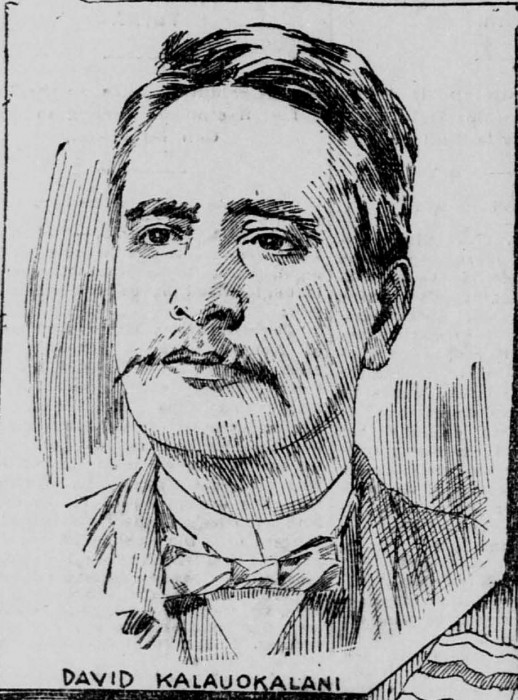 Following Kaulia, David Kalauokalani, President of the Hui Kalaiaina, explained the details of the annexation treaty to the crowd. He told them that the Republic of Hawaii had agreed to give full government authority over to the United States, reserving nothing. It would also give all the government’s money, the government and crown lands, government buildings, harbors, bays, military forts, military armaments and warships, and all resources claimed by the government of the Hawaiian Islands. Furthermore, he explained, the laws of the United States would not extend to the Hawaiian Islands, but the Congress of the U.S. would decide how Hawaii was to be governed. It was uncertain whether the Kanaka Maoli would have the right to vote. He said those who favored annexation would want to deny Kanaka Maoli voting rights because, from the very beginning, they have known that the Kanaka Maoli would overwhelmingly vote against annexation and anyone who supported it. This is the reason they were always afraid to put a vote to the people.
Following Kaulia, David Kalauokalani, President of the Hui Kalaiaina, explained the details of the annexation treaty to the crowd. He told them that the Republic of Hawaii had agreed to give full government authority over to the United States, reserving nothing. It would also give all the government’s money, the government and crown lands, government buildings, harbors, bays, military forts, military armaments and warships, and all resources claimed by the government of the Hawaiian Islands. Furthermore, he explained, the laws of the United States would not extend to the Hawaiian Islands, but the Congress of the U.S. would decide how Hawaii was to be governed. It was uncertain whether the Kanaka Maoli would have the right to vote. He said those who favored annexation would want to deny Kanaka Maoli voting rights because, from the very beginning, they have known that the Kanaka Maoli would overwhelmingly vote against annexation and anyone who supported it. This is the reason they were always afraid to put a vote to the people.
A resolution protesting the annexation was read to the crowd, who approved it. It was announced that U.S. Senator Morgan, an advocate of annexation, would be arriving soon, and that there would be another mass meeting held while he was here.
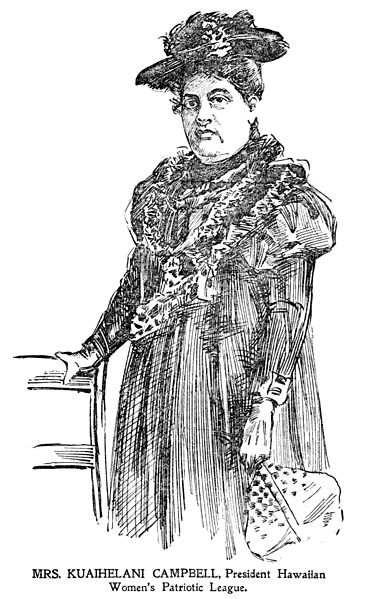
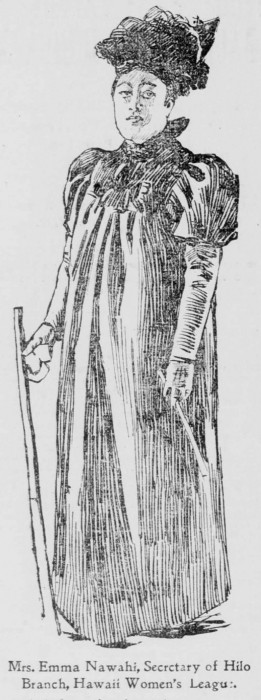 The petition drive started at about this time. Very soon afterwards, Mrs. Abigail Kuaihelani Campbell, President of the Women’s branch of the Hui Aloha Aina, and Mrs. Emma Aima Nawahi boarded the inter-island ship the Kinau for Hilo on a signature gathering mission.
The petition drive started at about this time. Very soon afterwards, Mrs. Abigail Kuaihelani Campbell, President of the Women’s branch of the Hui Aloha Aina, and Mrs. Emma Aima Nawahi boarded the inter-island ship the Kinau for Hilo on a signature gathering mission.
On September 14, Senator Morgan and four congressmen from the U.S. indeed arrived. On the same day, Mr. Enoch Johnson and Mr. Simon Peter Kanoa boarded the Claudine for Maui, and Mrs. Kaikioewa Ulukou departed for Kauai – all bound to gather signatures on those islands. The Hui Aloha Aina paid all of their expenses.
At the same time, there was a branch of the Hui Aloha Aina active at Kalaupapa (on the island of Molokai) where people with leprosy were imprisoned. The President of the Kalaupapa branch was Mr. Robert M. Kaaoao, who not only gathered signatures on the protest petitions, but had also organized a full day’s activities to commemorate the Queen’s birthday on September 2. The activities included a prayer service; boating, swimming, running, horse, and donkey races; as well as pole climbing and apple eating contests.
When Mrs. Campbell and Mrs. Nawahi arrived in Hilo harbor, they were greeted with honors. A delegation of the Hilo chapter of the Hui, consisting of Mr. Henry West, Mrs. Hattie Nailima, Mrs. Kekona Pilipo, and Mrs. J.A. Akamu met them at the harbor. The Hilo delegation showered them with leis, and proclaimed that a Hawaiian double-hulled canoe would carry them into the harbor. They had decorated five seats on the beautiful vessel with leis of maile, lehua, and other flowers, and had a Hawaiian flag waving at the back. The people of Laupahoehoe had sent welcome gifts of opihi, limu, and fish. Mrs. Campbell and Mrs. Nawahi attended meetings of the Hui Aloha Aina all over the Hilo and Puna area, and returned with thousands of signatures.
Meanwhile Mrs. Laura Mahelona was working hard in Kona and Kau; she was the committee member delegated to gather signatures there of both men and women. She traveled from North Kona south to Kau, leaving blank petitions with instructions everywhere she went. She told the chapter presidents to get the petitions signed and return them in a few days when her ship would stop again at the same harbors. When she returned, signed petitions were ready at every harbor. When she landed at each port, she was welcomed by the women of the Hui Aloha Aina branches, carrying leis over their arms, and when she returned to the boat, her clothes couldn’t be seen because she was completely covered by leis. Mrs. Mahelona gathered 4,216 signatures.
Mrs. Kaikioewa Ulukou gathered 2,375 on the island of Kauai.
Mr. Simon P. Kanoa gathered 1,944 in the district of Hana, Maui.
When all the work was done, there were over 21,000 signatures- men’s and women’s in about equal numbers. When one considers that the population of Native Hawaiians at the time was less than 40,000, this is an impressive number.
The Hui Kalaiaina also had a substantial membership- -they conducted their own petition drive at the same time, collecting about 17,000 signatures.
The Hui Aloha Aina held another mass meeting on October 8, 1897, and at that time decided to send delegates to Washington D.C. to present the petitions to President McKinley and to the Congress.
The executive committees of the three hui met and decided to send four delegates: James Kaulia of Hui Aloha Aina, David Kalauokalani of Hui Kalaiaina, with John Richardson, and with William Auld as secretary. All four were Kanaka Maoli. This was an important sign to the nation. Some people had written in the papers that previous delegates to Washington had failed because they were not Kanaka Maoli, or because they were too wealthy to truly have the nation’s well-being in mind at all times. It is important to note that although a women’s representative did not travel to Washington, Mrs. Campbell, President of the women’s branch of Hui Aloha Aina, was part of the decision-making committee, and was viewed as a leader of the nation along with the men.
The four Elele Lahui – National Delegates – left Hawaii on November 20, 1897. In San Francisco on November 28, they commemorated La Kuokoa – Hawaiian Independence Day.
They arrived in Washington on December 6, the day that the Senate opened. They first met briefly with Queen Liliuokalani, who was staying in Washington. Then they met Senator Richard Pettigrew who took them in to the Senate’s opening ceremonies. After the ceremonies, they returned to Ebbitt House where the Queen was staying, and where they would also stay. Someone told them at that time that their trip to Washington was useless, since it was known that there 58 votes on the side of annexation, with only 2 more votes needed for the treaty to pass. They said they didn’t answer but remained as quiet as doves. They spoke amongst themselves later, however, to plan what to do.
The next day, December 7, they met again with the Queen to consider how to present the petitions. They chose the Queen as chair of their Washington committee. Together, they decided to present the petitions of Hui Aloha Aina only, because the substance of the two sets of petitions was different. Hui Aloha Aina’s was called “petition protesting annexation,” but the Hui Kalaiaina’s petitions called for the monarchy to be restored. They agreed that they did not want to appear divided, as if they had different goals.
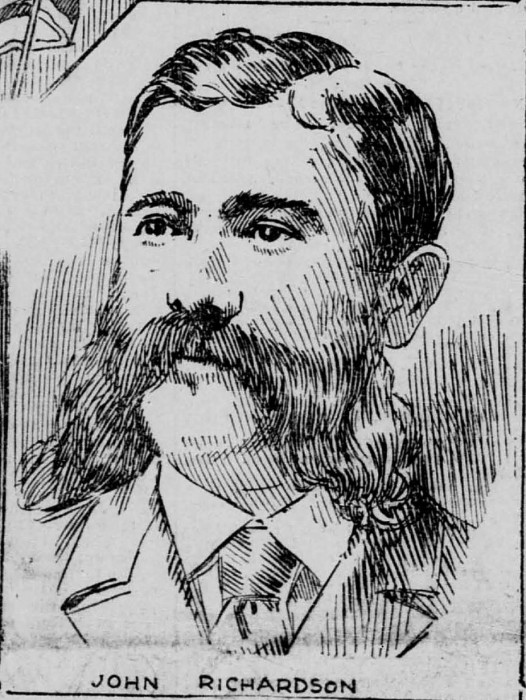 The day after that, the delegates met with Senator Hoar, who was against annexation. They braved snow, cold and slippery streets to get to the Senator’s residence. They said the “elemakule” (old man) greeted them with a handshake. He asked them what the people of Hawaii thought about annexation. John Richardson, the spokesman, explained everything. While he was explaining, they could see tears welling up in the old man’s eyes. Richardson told him that they brought petitions signed by the whole nation protesting the annexation. Senator Hoar told them to submit the petitions to him, and he would bring them before the Senate, and then to the Foreign Relations Committee. David Kalauokalani of Hui Kalaiaina also submitted his endorsement of those petitions (so that the U.S. would know both huis had the same goal). On December 9, Senator Hoar read the text of the petitions to the Senate and had them formally accepted. The delegates were present, seated in the area where people are allowed to observe the Senate proceedings.
The day after that, the delegates met with Senator Hoar, who was against annexation. They braved snow, cold and slippery streets to get to the Senator’s residence. They said the “elemakule” (old man) greeted them with a handshake. He asked them what the people of Hawaii thought about annexation. John Richardson, the spokesman, explained everything. While he was explaining, they could see tears welling up in the old man’s eyes. Richardson told him that they brought petitions signed by the whole nation protesting the annexation. Senator Hoar told them to submit the petitions to him, and he would bring them before the Senate, and then to the Foreign Relations Committee. David Kalauokalani of Hui Kalaiaina also submitted his endorsement of those petitions (so that the U.S. would know both huis had the same goal). On December 9, Senator Hoar read the text of the petitions to the Senate and had them formally accepted. The delegates were present, seated in the area where people are allowed to observe the Senate proceedings.
On December 10, the delegates met with Secretary of State John Sherman, and Kalauokalani submitted a memorial protesting annexation (Ka Memoriala a ka Lahui) to him.
In the following days, the delegates met with many different Senators and Congressmen. Senators Pettigrew and White encouraged them in the hope that the annexation treaty would be defeated. They said that they were asked a lot of questions about Japan or England trying to annex Hawaii. They answered that either of them could have taken Hawaii if they had wanted to any time in the past five years. Why would they wait for America to try before they did so? They also reminded the U.S. Congressmen that Hawaii had remained independent for fifty years, partly because of the 1843 resolution signed by Great Britain and France guaranteeing Hawaii’s independence.
By the time they left Washington on February 27, there were only 46 votes in the Senate on the pro-annexation side, down from 58 when they had arrived. Forty-six votes was far too few for the treaty to pass — sixty votes were necessary.
Senator Pettigrew and Senator Turpie insisted that the Kanaka Maoli of Hawaii be given a chance to vote on annexation. But Senator Morgan and the other pro-annexation Senators knew that if a vote were taken, it would be overwhelmingly in favor of Hawaii’s independence. In a report, these Senators wrote, “If a requirement should be made by the United States of a plebiscite [vote] to determine the question of annexation, it would work a revolution in Hawaii which would abolish its constitution.” They knew, in other words, that if the people were allowed to vote, not only would they reject annexation, they would also reject the haole Republic that had been forced upon them against their will.
 Three of the delegates, James Kaulia, David Kalauokalani, and William Auld returned to Honolulu victorious, sure that the treaty would fail, as indeed it did. They had carried the hard work and hopes of the whole nation to Washington in the form of the protest petitions. They had succeeded in persuading many senators to vote against the treaty. They left behind John Richardson to continue the work, along with Queen Liliuokalani, her secretary Joseph Heleluhe, and her devoted friend, J.O. Carter.
Three of the delegates, James Kaulia, David Kalauokalani, and William Auld returned to Honolulu victorious, sure that the treaty would fail, as indeed it did. They had carried the hard work and hopes of the whole nation to Washington in the form of the protest petitions. They had succeeded in persuading many senators to vote against the treaty. They left behind John Richardson to continue the work, along with Queen Liliuokalani, her secretary Joseph Heleluhe, and her devoted friend, J.O. Carter.
One annexation crisis was over, but another was soon to follow. This same year, the peoples of Cuba and the Philippines were fighting wars of independence against Spain. The United States also declared war on Spain after the U.S. warship, the Maine was blown up in a harbor in Cuba. The reason that the Maine was even in Cuba is questionable, since the U.S. had not been involved until it involved itself by sending the ship there. Be that as it may, the United States was at war. Suddenly, the empire- builders of the United States were saying that they needed to send military troops on ships to the Philippines to fight Spain. For this, they said they needed Hawaii. In the midst of the fever of war, a Joint Resolution of Congress called the Newlands Resolution passed by a simple majority of each house, making Hawaii a territory of the United States. That was in July of 1898; the flag of the United States was hoisted over Hawaii on August 12th.
The Kanaka Maoli continued to protest. The Hui Kalaiaina concentrated on persevering to undo the annexation, and restore the Native government. Hui Aloha Aina began to work towards securing full civil and political rights for Hawaiian citizens in the U.S. territorial system. In 1900, the two huis banded together as one political organization called the Home Rule Party. David Kalauokalani was elected President, and James Kaulia as Vice-President. This was the party that elected Robert Kalanihiapo Wilcox as (non-voting) Delegate to the U.S. Congress.
James Keauiluna Kaulia continued his work for his nation until the day of his death at age 41, in 1902. On that Sunday, he spent the morning at the jail house trying to help prisoners assert their rights. After church and lunch, he lay down for a nap from which he never woke up. He died of heart failure.
David Kalauokalani lived until 1915, also serving his people all of his life. He served as a senator in the territorial legislature, and as a member of the Board of Health. His son, also named David, became the first clerk of the City and County of Honolulu.
Mrs. Kuaihelani Campbell served as President of Hui Aloha Aina for its entire existence. She later became well-known as a benefactor for the ill and poor among her people, and for her many charitable deeds. She married Samuel Parker in 1902. Her daughter Abigail married Prince David Kawananakoa at about the same time, and Mrs. Campbell-Parker thereby became an ancestor to the royal family remaining in Hawaii today. She passed away in 1908.
Mrs. Emma Aima Nawahi kept the newspaper Ke Aloha Aina running for many years as its owner and business manager. She sold it in 1910. She also remained active in charities until her death in 1935.
The petitions protesting annexation, consisting of five hundred fifty-six pages, are now held in the National Archives in Washington D.C.
The Kanaka Maoli continue to protest today. We have never relinquished our national sovereignty. Kanaka Maoli are working on state, national, and international levels to have our existence as a nation recognized. Kanaka Maoli also continue to resist and protest every encroachment upon our inherent rights to this land, our ocean and fresh waters, and all the other natural resources of Hawaii. We are insisting as well on our rights to keep our language and cultural traditions, and the land itself, alive.
New Book: Jon Olsen’s “Liberate Hawai‘i!”
Author Jon Olsen has come out with his new book “Liberate Hawai‘i,” which can be purchased online at Amazon.com.
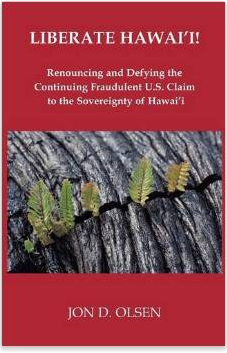 “If the government of Hawaii had not been illegally overthrown by the U.S. Marines through a classic act of Manifest Destiny and American-style gunboat diplomacy, Hawaii would still be an independent sovereign nation today. Notwithstanding a series of clever illegal moves by the U.S. government, Hawaii cannot be considered a legally bona fide state of the United States. . . . In 1959 the U.S. falsely informed the U.N. that Hawaii had become the 50th state of the United States after an illegal plebiscite. . . . Jon Olsen . . .convincingly points out that the fraudulent claim of Hawaiian statehood is immoral, illegal, and unconstitutional.” –The late Thomas H. Naylor, Professor Emeritus of Economics, Duke University
“If the government of Hawaii had not been illegally overthrown by the U.S. Marines through a classic act of Manifest Destiny and American-style gunboat diplomacy, Hawaii would still be an independent sovereign nation today. Notwithstanding a series of clever illegal moves by the U.S. government, Hawaii cannot be considered a legally bona fide state of the United States. . . . In 1959 the U.S. falsely informed the U.N. that Hawaii had become the 50th state of the United States after an illegal plebiscite. . . . Jon Olsen . . .convincingly points out that the fraudulent claim of Hawaiian statehood is immoral, illegal, and unconstitutional.” –The late Thomas H. Naylor, Professor Emeritus of Economics, Duke University
“Jon Olsen is a warrior of truth, proclaiming a vision of Hawaiian sovereignty. He is not alone. The Hawaiian Resistance that began sweeping across the islands forty years ago has become a storm of new consciousness. Where will it blow? Olsen charts that storm’s history and possibilities. For readers whose eyes can see a radically free Hawaii, here it is.” –Jim Douglass, author of JFK and The Unspeakable
“. . .you are an incredibly gifted writer and inquiring spirit. Congratulations on such a difficult achievement! The research is impressive and your writing cohesive and erudite without being pompous.” –Belva Ann Prycel accomplished artist and author of memoirs Passage, Times and Tides, and Water Tales
“Jon Olsen’s new book, Liberate Hawai’i: Renouncing and Defying the Continuing Fraudulent U.S. Claim to the sovereignty of Hawai’i, makes a compelling case — a legal case as well as a moral one.” –David Swanson
“Good quick over view of 19th century illegal takeover of independent Kingdom of Hawaii. Lots of documentation of the sad period in Hawaii’s History. This aspect of US History is soulfully lacking in “normal” History from the view point of rich Americans Recommend to all interested in the real history of US takeover in Hawaii. Tom Hoffman’s Nation Within is also an excellent history of this period.” –Bill Smith
“Having been involved since 1982 in many aspects of the Hawaiian Sovereignty movement, mostly as a photographer, I find Jon D. Olsons’ book, Liberate Hawaii, to be a fascinating and well put together collection of historical facts about the great injustice done to the Hawaiian people by a rambunctious and greedy group of American businessmen. It is a compelling read, and I highly recommend it.” –G. Brad Lewis
Petition of Support for CEO Dr. Kamana‘opono Crabbe
Aloha,
In response to the letter submitted today to U.S. Secretary of State John F. Kerry by the Office of Hawaiian Affairs CEO Dr. Kamanaopono Crabbe, we have created a statement of support. If you are interested in signing onto this document please see the attachment or go to the online site:
http://www.thepetitionsite.com/525/987/222/he-manao-pono-a-statement-of-support/
Please disseminate this widely throughout our community.
In solidarity,
Kekuewa Kikiloi
__
Kekuewa Kikiloi, Ph.D.
Assistant Professor
Kamakakūokalani Center for Hawaiian Studies
Hawaiʻinuiākea School of Hawaiian Knowledge
University of Hawaiʻi at Mānoa
2645 Dole Street Honolulu HI 96822
New Research at the University of Hawai‘i – Dr. Willy Kauai “The Color of Nationality”
https://vimeo.com/93158706
Hawai‘i War Crimes: Depleted Uranium found in Army Training Areas in Hawai‘i
War crimes are actions taken by individuals, whether military or civilian, that violates international humanitarian law, which includes the 1907 Hague Conventions, 1949 Geneva Conventions and the Additional Protocols to the Geneva Conventions. War crimes include “grave breaches” of the 1949 Fourth Geneva Convention, which also applies to territory that is occupied even if the occupation takes place without resistance. Protected persons under International Humanitarian Law are all nationals who reside within an occupied State, except for the nationals of the Occupying Power. The International Criminal Court and States prosecute individuals for war crimes.
War Crimes: Destroying or seizing the [Occupied State’s] property unless such destruction or seizure be imperatively demanded by the necessities of war
In 2006, the United States Army disclosed to the public that depleted uranium (DU) was found on the firing ranges at Schofield Barracks on the Island of O‘ahu. It subsequently confirmed DU was also found at Pohakuloa Training Area on the Island of Hawai‘i and suspect that DU is also at Makua Military Reservation on the Island of O‘ahu. The ranges have yet to be cleared of DU and the ranges are still used for live fire. This brings the inhabitants who live down wind from these ranges into harms way because when the DU ignites or explodes from the live fire, it creates tiny particles of aerosolized DU oxide that can travel by wind. And if the DU gets into the drinking water or oceans it would have a devastating effect across the islands.
The following video and information is provided by Kamakako‘i: Cutting Edge.
The information below has been consolidated and summarized primarily from publicly available documents on the U.S. Nuclear Regulatory Commission’s web-based “Agencywide Documents Access and Management System” (ADAMS). A comprehensive listing of the original documents related to U.S. Army depleted uranium licensing in Hawai‘i can be found by going to http://adams.nrc.gov/wba/ and doing a search of “Docket Number 04009083.” The date and “accession” reference number for each document is provided in the filename of each downloadable document.
DEPLETED URANIUM BACKGROUND:
Depleted Uranium (DU) (external link) is a byproduct of the nuclear energy and atomic weapon industries. Because it has been altered, DU is less radioactive than natural uranium, which occurs naturally in the environment. DU is forty percent more dense than lead, yet lighter than other comparable materials, and has civilian uses such as in medical applications, as well as for ballast in aircraft and boats. DU is used in military applications as ballast for spotting rounds and as armor and weaponry because it has the ability to pierce other kinds of armor, self-sharpen, and ignite on impact at very high temperatures.
DEPLETED URANIUM AND THE ARMY IN HAWAI‘I:
According to Army documents, between 1962 and 1968, the Army used DU in M101 spotting rounds for the Davy Crockett Weapon system, a low-yield battlefield nuclear device. The body of the M101 spotting round contained 6.2 ounces of DU that allowed soldiers to simulate the flight path of the munitions fired from the Davy Crockett Weapon system. Although not an atomic explosive, M101 spotting rounds contained a small amount of explosive charge that created a puff of smoke to allow training soldiers to locate the point of impact for a round. Remnants of the M101 rounds were rediscovered during unexploded ordnance clearance at the Schofield Barracks impact area in August 2005, and again following prescribed burns in September 2006.
LICENSE APPLICATION:
In November 2008, the U.S. Army submitted an application to the U.S. Nuclear Regulatory Commission for a materials license to possess depleted uranium at military installations where the Davy Crockett M101 spotting round was used in training activities. In Hawai‘i, the U.S. Army application covered impact areas (where access is restricted due to the presence of in-field hazards, including unexploded ordnance) within training ranges located at Schofield Barracks on O‘ahu and the Pohakuloa Training Area on Hawai‘i Island. The license was requested to cover the possession and maintenance of depleted uranium remaining in the field from the 1960s training. Due to sparse training records (full document with appendices can be found here (external link)), the amount of DU and the distribution of rounds within each training range could not be determined, so the Army sought to license the 125 kilograms of DU from 714 spotting rounds that the Army believed it had fired at Schofield Barracks and Pohakuloa Training Area.
ENFORCEMENT ACTION:
In response to a request filed by a Hawai‘i Island resident, the Nuclear Regulatory Commission initiated an enforcement investigation against the U.S. Army for its possession of DU without a materials license, following the expiration of its previously held license in April 1978. On August 1, 2011, the NRC issued a notice of violation to the Army for its possession of DU at training ranges located at Schofield Barracks and the Pohakuloa Training Area from spotting round fragments of the M101 Davy Crockett weapon system, fired at Army training ranges during the 1960s. The NRC considered the violation to be significant, but did not impose a civil penalty due to the corrective actions proposed by the Army to control access into areas suspected of containing DU.
LICENSE EXEMPTION REQUEST:
During its extended negotiations with the Nuclear Regulatory Commission over the conditions of a DU possession license, the U.S. Army formally applied for an exemption for its in-field DU at Schofield Barracks and Pohakuloa Training Ranges, by letter dated September 10, 2012. Through information provided in its original request and a later February 6, 2013 response, the Army argued that it had met its burden of showing that the exemption would not “endanger life or property, or the common defense and security and [would be] otherwise in the public interest.” The NRCdenied the Army’s request for a license exemption.
DU POSSESSION LICENSE ISSUED:
On October 23, 2013, the Nuclear Regulatory Commission issued to the U.S. Army a materials license for DU located at Schofield Barracks and Pohakuloa Training Area. In addition to the conditions contained in the license, the NRC incorporated the commitments, representations, and statements contained in the Army’s original license application, the Physical Security Plan, and the Radiation Safety Plan. The materials license also requires the Army to provide the NRC with an air sampling plan and a plant sampling plan for its review and approval. In accordance with its materials license and air sampling plan, the Army conducted training that included high-explosive fire into the radiological control area at Schofield Barracks in February 2014, with an NRC inspector present.

